“Any night in Montreal was like New Year's Eve in New York.” -Lili St-Cyr, Queen of Striptease in the 40s
Montreal is the city of festivals, and we have the Quartier des Spectacles to thank for that. This modern concrete landscape sets the stage for Montreal’s festival season with concerts unfurling every weekend, to the dismay of some who believe the weekly festivals a bit excessive. If not the Jazz Festival or Francofolies, there’s the Nuits Blanches during the winter or the recent but widely embraced Christmas Village. But underneath those stands of overpriced artisanal candles, beneath the pitter-patter of everyone’s jumps, the layer of grey ground covered in wasted and dropped drinks, below all the lighting fixtures and expositions, the bipolar ice skating rink that only works half of winter lies the ashes of Montreal’s own Red Light District. A district where, in the 40s, cabarets thrived, seducing tourists worldwide to experience the best burlesque shows in North America. A neighbourhood where Americans could indulge in all vices forbidden during the Prohibition era. A borough that gave Montreal the name of “Sin City” before Las Vegas took it. A borough that bears its name in the past, now known as the family-friendly, municipal-sanctioned Quartier des Spectacles.

1867 and Beyond (Late 19th Century and 1900s)

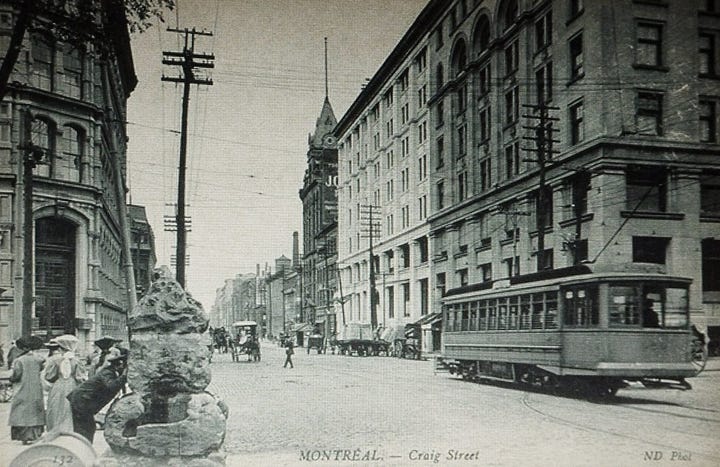
The Red Light District takes its name from the red lights, denoting every brothel. Rue Sherbrooke, Saint-Denis, today’s Notre Dame East, and Bleury outline its borders, with the intersection between St-Catherine and St-Laurent considered its cultural heart (nicknamed the Main). One of the first pieces of proof indicating sex work in Montreal was a bylaw in 1867 called “Loi sur les maladies contagieuses” that mandated all sex workers get tested and work in specific areas and buildings. At the turn of the century, Montreal was the biggest city in Canada, holding to its advantage the biggest port in the country. Its population doubled in size in 20 years. And around that time, 150 brothels were detected in the Red Light District. The clientele consisted mainly of sailors stopping by the Port of Montreal, which then shifted to soldiers shipped off into war. Despite the conservative moors at the time who highly disapproved of these activities, the police decided against dismantling these brothels for fear that sex workers would spread out across Montreal. For the benefit of the city, it was best that most prostitutes stayed in the same neighbourhood.
Red Light districts were not a novelty idea in North America; every major city in the US held one. Boston had the Black Sea, New York, the Tenderloin, Chicago, the Leevee, Philadelphia, Northern Liberties. But at the start of the new century, during a period now known as the Progressive Era, a wave of reforms washed over America, leading to a mass demolition of all red-light districts. Only one still stood, New Orleans. The fear of rapid industrialization, mass immigration, and increasing wealth disparity and poverty led many cities, states, and, eventually, the country to adopt reforms that would counteract the pitfalls of this rabid capitalist society. One of its many feared repercussions is the proliferation of prostitution, the bane of this new urbanized world.
The Progressive Era eventually led to the Prohibition Era, banning all alcohol consumption, sale and production throughout the United States, and in conjunction, gambling. If any American wanted to sip some liquid courage, they needed to venture into the underworld. But further up north from the border lies a French-speaking city where all could freely drink their alcoholic beverage, where prostitutes roamed the streets of one still-standing Red Light District, where anyone could bet on their favourite horses to potentially win 100$. Canada implemented its own Prohibition laws, but in true Quebec fashion, the province rebelled and repealed them after a whopping 80% voted no during the referendum. Les Commission des Liqueurs (ancestor of “La Société des alcools du Québec”) would manage all alcohol sales, one spirit at a time, with no wine limit, all sales wrapped in paper bags. Customers would choose from a list behind a grid barrier, and the vendor retrieved it from its arsenal.
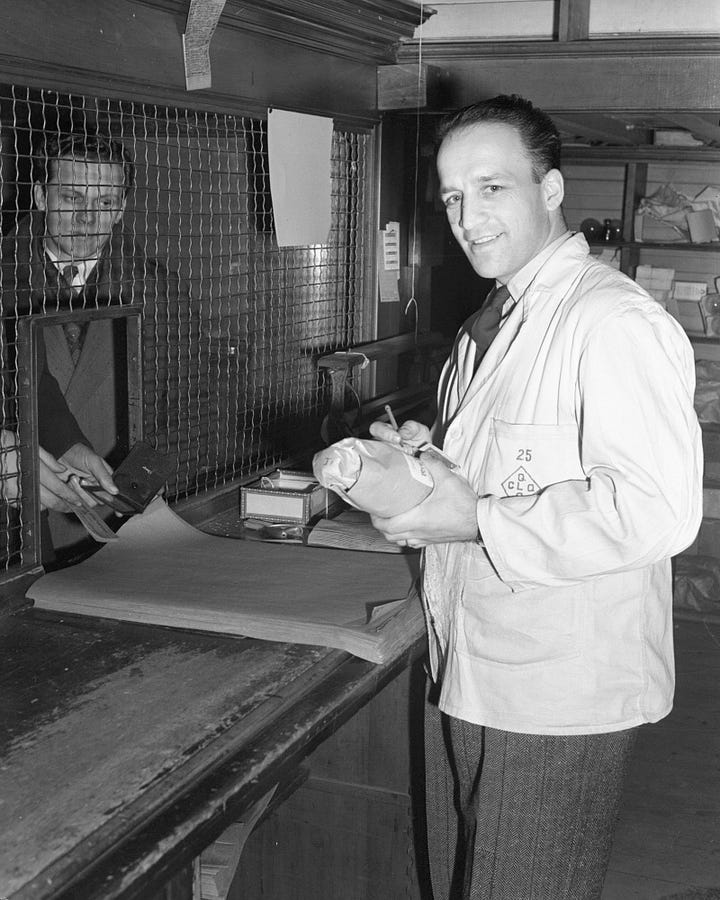
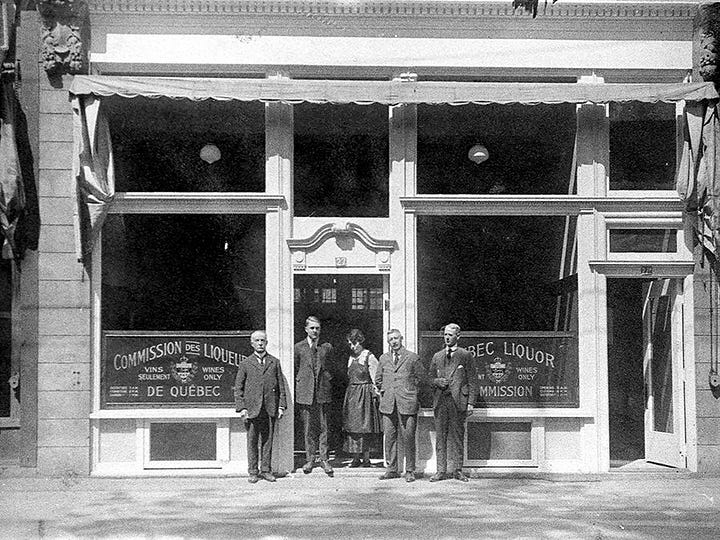
“I’m on my way // And I’ll make whoop-whoop whoopee night and day //
Anytime my wifey wants me // You can tell her where to call //
Goodbye Broadway, hello Montreal.”
As the lights of American bars, clubs and casinos dimmed, Montreal’s flickered and then brimmed.
Roaring 20s (1920s)

Any passerby could stop by its many bars and clubs that lined Sainte-Catherine and drown in alcohol that overflowed all glasses. This lively night all set to the beats of jazz music. Black musicians would move to this Canadian city to freely play without systemic racism stopping the music. When the clock struck midnight and all legal alcohol sales closed, men would storm speakeasies, or in old Montreal terms, Blind Pigs, to stretch their feverish nights even further. These hidden bars stood in the cracks of establishments or behind a hidden door where vodka would cost three times its average daytime price. Through their business intuitions, the Bronfman family saw the perfect opportunity to sell their cheap whiskey to arriving tourists ready to indulge in vices, accruing wealth passed on through generations. At a fraction of the cost in New York, one could smoke an opium pipe or snort the best cocaine while still taking precautions, as 90% of drug-related arrests happened in the Red Light District. And through all this drug, alcohol, sex excess, hedonism to blind vicars, lied the perfect haven for all gangsters and criminals. Members of the mob claimed Montreal safer than American cities due to the lax policing of its streets. These officers that easily bent their ethics at the sight of some dollar bills.
The police could have been more brutal in cracking down brothels, but with enthusiasm, participated in the shady business of raids. In 1913, the chief made a deal with brothel owners to let their business continue if they sold Frisco Soda Water, the carbonated drink company he owned. Other raids would unfold just as comically. They would notify madams before storming in. Thus, brothel owners could use different strategies to alleviate the outcome:
Hire someone to pretend they were them
Have a backdoor to hide their best prostitutes and clients
Give out a false address
Or, the police could arrest only a few individuals
The comedy persisted in gambling houses, where they would arrest everyone, but leave the dice, the green felt tables, the cards behind, allowing the game to carry on a couple of hours later.
But eventually, the glee-inducing liquid courage, constant taps of dancing shoes, the endless rolls of barbooth dice, the red lights that set Saint-Laurent ablaze ceased. The Great Depression started, the Prohibition Era ended and musicians, singers, club owners packed their bags and headed back home.
Golden Years (1940s)
In stark contrast to the drought that plagued most North American cities during the Great Depression, the Red Light District would experience its golden years in the 40s.
This new decade started with World War II when soldiers would pass by Montreal to set off into war. The Red Light District was only a few blocks from the port for these young men’s enjoyment. They could order a taxi and discreetly ask to go to the Red Light District, to the driver’s amusement. The cathouse to visit was the 312 Ontario East, now a comedy club appropriately named Le Bordel. To benefit from their services, a taxi driver or another client must recommend the customer. There were multiple doors, multiple apartments all connected where on the first floor, you could order alcohol and then move on to the second floor to sleep with a prostitute, who first presented herself in glamourous gown.
Despite the most famous owners all being madams, these spaces were not beacons of female liberation. Vicious cycles of debt repayment would trap these working women. They required loans to maintain their appearance while losing half of their salary to the owner. They were forbidden from walking alone or going out as much as they pleased. These restrictions meant that they were often at the mercy of their madam. But for many, it was all worth it for shelter and food.


Unfortunately, the Red Light District posed a big problem for Canada: STIs ravaged the army like wildfire. Amid the war, 4000 soldiers got affected with syphilis and gonorrhea, hindering Canada’s ability to lend a hand to its European compatriots. Furthermore, many soldiers stopping by the Quebec metropolis would spend copious amounts of money to enjoy its nightlife before crawling through European trenches. The fast proliferation of STIs worried the army general since Montreal experienced two to three times more cases than any other military district. If the trend continued, the country would have to ban Montreal for all soldiers. Fearing significant profit loss, the city closed all brothels. And in two days, no bordello would live to see another day.
The immediate termination of all houses did not end all sex work. About 20% still continued. They would slither through alleys, the streets of the Red Light District, hire people to recommend their names, sit in bars and entice future clients. They grew an extensive network of hotel concierge, taxi drivers, bartenders, bouncers, doormen, all open to help for a small fee. And when they finally seduced a potential customer, they could walk to victory rooms or tourist rooms, charged hourly.

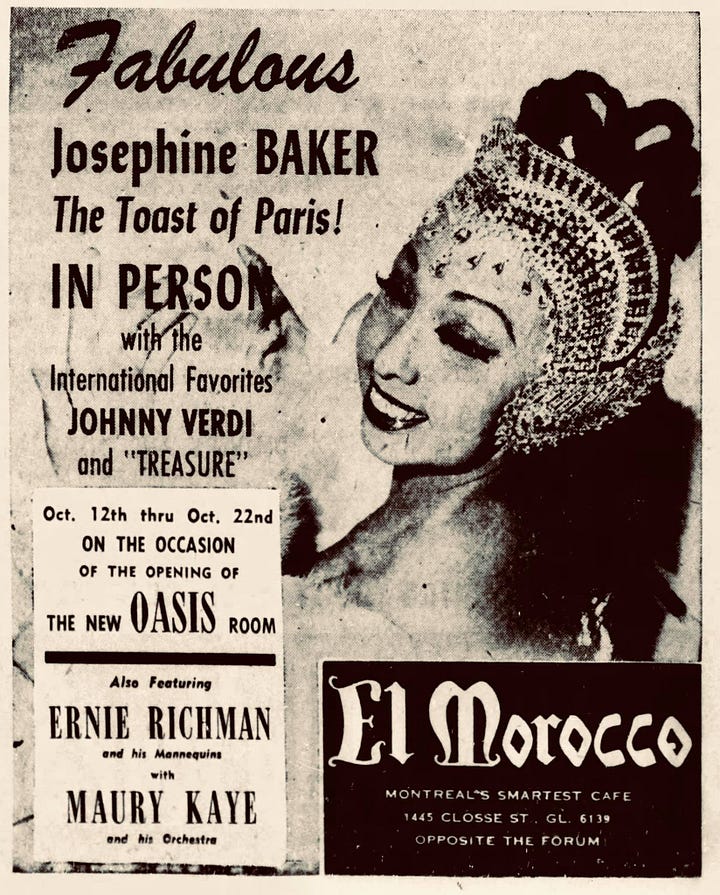


What injected life into Montreal's veins, fueled its endless nights of partying, was all its cabarets. These institutions at the center of Montreal's nightlife lure songstresses, the best jazz musicians to perform in this city of vice. One notable figure of these cabarets was Lily St Cyr, an American burlesque dancer from Minneapolis who gained notoriety for her striptease shows in Theater Gayety. The bylaws at the time forbade all dancers from leaving the stage with fewer clothes than in the beginning. Therefore, to bypass this rule, she would start off naked with some elegant pasties inside a bathtub. Then, slowly, she dressed herself up for the duration of the show, putting on more and more clothes before saying goodbye to her audience.
If burlesque shows were not a person's thing, they could head to Faisan Doré, Montreal's most popular francophone club, to potentially rub shoulders with the best names in Quebec's entertainment industry. If Faisan Doré was too full, they could spend their night in Casa Loma, where entertainers intertwined singing with comedy shows, gifting you the full range of human emotion in 90 minutes. And if one was so lucky, they could witness the beginnings of one Ginette Reno. Those who wish to hide from racial prejudice could dance their stress away in Rockhead's Paradise, a few blocks from the district, and sway to Louis Armstrong's trombone or Billie Holliday's yearnful melodies.
Pax’s Axe (1940s and 1950s)
These booze-filled, flashing billboards, frantic nights covered an insidious underworld. The mafia owned multiple cabarets, where in between all the dancing lay corpses in alleyways.
There have been multiple attempts to "clean Montreal up." But they were futile. Corruption ran deep. Compromises were made, and arrests were light in charges. All these blind eyes eventually stopped when Harry Davis, a known mafioso who possessed multiple gambling houses, got killed in broad daylight by another gangster who wished to open his own establishment around the corner. The public nature of the crime led to the ascension of one Pacifique Plante, nicknamed Pax Plante, who went from assistant director to leader of the morality squad.
Through his time on the team, he quickly got confronted with the lenient policing that allowed such illegal activities to thrive. Plante led the morality squad with a firm hand, calling the press to photograph his raids and demonstrate the sternness and efficiency of his ways. The morality squad distanced itself from the usual police force. Pax allowed 60 out of 3000 police officers to join, contributing to its air of exclusivity. They shut places down. They arrested influential mobsters. They confiscated gambling equipments. There were no compromises, no air of tolerance. Anyone engaged in any vice would be arrested.
Tired of his reign in power, the chief of police, Albert Langlois, fired Pax Plante. While some believe his dismissal derived from Langlois’s questionable friends, others explain this decision as a reaction to him being the head of a squad through his profession as a lawyer instead of a modest working police officer. However, this hiccup did not slow down Plante’s motivation. Several months later, he started a weekly column in Le Devoir detailing the mob’s control over the city. The recurrence of his articles and his extensive proof finally gave citizens the needed evidence to start a case against Montreal’s ingrained corruption, leading to “l’Enquête Caron.” The case found 20 out of 58 accused police officers guilty of tolerating prostitution and illegal gambling houses.
The death of the Red Light District (1950s until 2000s)
While most consider Jean Drapeau the catalyst to Montreal’s entrance into modernity, he placed the final nail in the Red Light District’s coffin.
As the police slowly chipped away its commercialized vices, what was left of the Red Light District was its residential area. Locals lived in highly dense residential blocks, where every strip of land would be used to house families, where some even lived in make-shift homes in people’s backyards. There was no greenery, no garden. Residents used any available space to build their dwellings. In the 1950s, Paul Dozois wrote a report highlighting thirteen problematic sections regarding the insalubrity of homes, with the Red Light District at the top of the list. With that information, the government could launch a mass urban revitalization project focused on cleaning the city up, evacuating as many residences as possible, and gifting these families social housing.
From afar, such a project might seem to originate from the city’s goodwill and its wish to provide these families with sanitary dwellings. However, it primarily arises from Jean Drapeau’s ambitions for the downtown. He believed downtowns should strictly center around offices and businesses, in keeping with modernist ideals of cities. Uses should be separated. To go from entertainment, to work, to home, one must use their car to move around. Shops, residences, and offices should not intermingle. The Red Light District’s very existence, close proximity to offices, and mom-and-pop shops on ground level threatened his aspirations. So it must be torn down.
When Jean Drapeau lost the election of 1957, Sarto Fournier took reign and approved the project named Habitations Jeanne Mance.
The city evicted 4300 residents, demolished 1300 residences, and removed 7 streets. In its place, it erected 5 retirement homes, 50 houses, and 14 multiplexes, all social housing. The number of residences dwindled from 1300 to 788.


Adding to these sanitation projects the Place des Arts created in the early 60s, these programs led to the end of one iconic neighbourhood. Eventually, cabarets turned into strip clubs, and decrepit buildings and institutions in ruins were replaced by parking lots. Furthermore, crime riddled its streets. To give Montreal a space that would make the city worthy of claiming itself a metropolis, to erect a space that could entice tourists just as much as it did earlier without the prostitutes, illegal gambling and drugs roaming around, the city built the Quartier des Spectacles, destroying multiple blocks of neglected buildings to make place for concrete plazas. The cabaret where Charles Aznavour sang weekly is now long gone; it is today a strip club. Through time, Casa Loma became a tattoo parlour. Where the Canadiens would loosen after anxiety-inducing games is now an office building. Where parents would tell their kids to close their eyes when prostitutes passed by were now residential blocks of 14 levels. Its glory days, where tourists would clamour and invade its streets to indulge in vices and sins, where singers and musicians ran and competed to play its many cabarets, where nights ended at 4am buoyed by the fast rhythms of jazz, were now whispers of its past.
Now, Quartier des Spectacles…
Walking across Quartier des Spectacles, one can still notice glimmers and callbacks to the Red Light District’s existence.
A strip club stands in front of the Saint-Laurent station, surrounded by these grey, stripped-down buildings, in this landscape of wholesome entertainment. Café Cléopâtre is a relic of the Red Light District, a reminder of its insidious past. In 2011, the city tried to expropriate the building. Still, according to municipal rules, it can only obtain land if the building changes owners or uses. With the participation of activists, residents and sex workers, it accrued enough money to defend itself in court and retain the rights of its institution. However, a similar fate did not strike the strip club on 2 St Catherine East, now turned into an art complex called Art Actuel.
Looking back at its history, Quartier des Spectacles seems a hotbed of contradictions, understandable considering it is one of the most evident examples of gentrification in Montreal. Here, you have a neighbourhood that used to house some of the poorest families, so much so that the city listed it as the most problematic residential area for insalubrity. Today, it lodges condos ranging from 1500$ to 9000$ a month. While cultural institutions and centers coagulate around this neighbourhood, they provide entertainment for a specific, more bourgeois demographic. A current theatre production on the life of Lily St Cyr sells tickets ranging from 50$ to 94$, indeed out of the price range of low-income families. A neighbourhood once feared for its delinquency and high crime rate is now a sector families visit to enjoy municipal-approved fun.
But the most egragious contradiction is its red circles. The logo of the Quartier is a red dot. Its visual identity and its branding center around the colour red. For some, it obviously calls back to its vice-ridden history, the red lights that signalled a brothel’s presence. The city spent millions sanitizing the neighbourhood, pushing all sex workers away, and expropriating strip clubs, only to utilize its history of sex work as a marketing strategy. It illuminates some of its central streets with red lights while spending millions to use all methods in its legal toolbox to kick any undesirable establishment out of the area. For the city, Cinéma l’Amour that still stands, Café Cléopâtre, which still fights to keep its location, disfigure its development potential, their attempts at changing its identity from the center of vice to a cultural center. And yet, here they are adopting a symbol that defined its brothels as a means to attract developers and tourists worldwide.
So the next time you walk around Quartier des Spectacles, strolling through Place des Arts, its concrete plazas malleable to any city organized event, its vast empty spaces, remember that 70 years ago, it was a full-fledged neighborhood, the entertainment center of Montreal, the borough of vice, sin, hedonism, Montreal’s forgotten Red Light District.

All my sources (in my own fashion, without MLA bibliography, because that is not fun):
Le Red Light de Montréal by Daniel Proulx: book à-la-true-crime about the district’s sinful past
Encyclopedie MEM : A holy grail resource for this article. You can find anything related to Montreal’s history in this treasure trove of information.
Montréal sous la pègre: Great interview with a historian detailing the control the mob had over Montreal
39-45 en sol canadien: Sexe et amour: Episode about prostitution in the Red Light District
Montréal’s historic Red-Light District: Article about the brief history of the neighborhood
Banishment through Branding: From Montréal’s Red Light District to Quartier des Spectacles: Incredible study on the problematic nature of Quartier des Spectacles and its relation to sex work


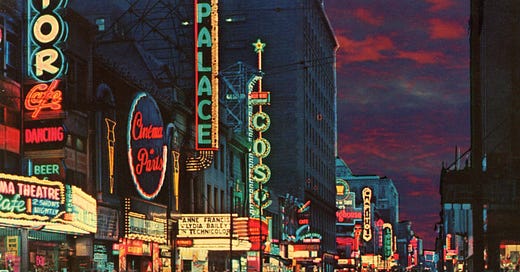





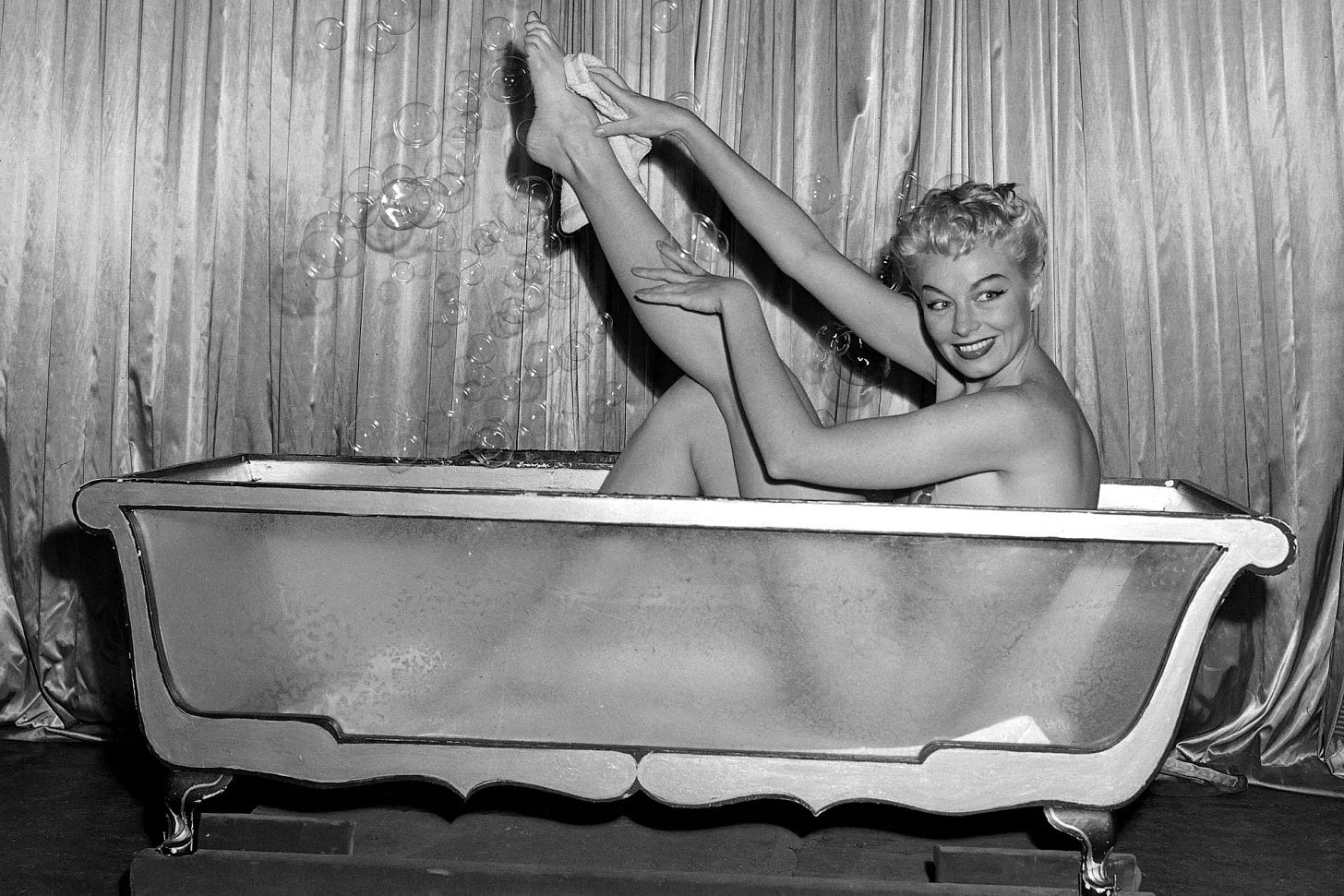
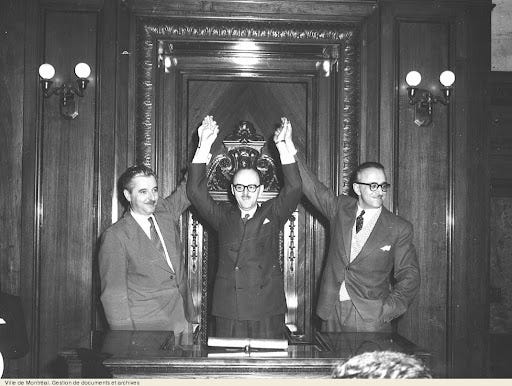

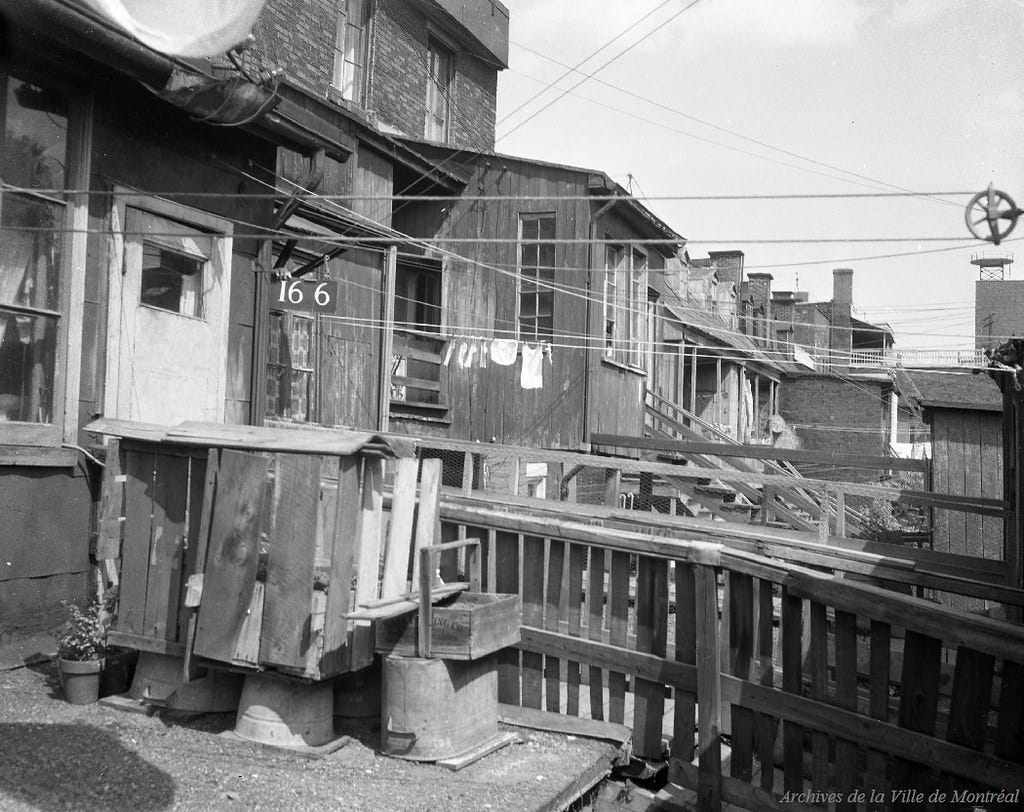


Wow, really loved this post! There's so much history here that I was not aware of and it was summed up so beautifully <3